The 2nd Annual Middle East Islamic Finance and Investment Conference (MEIFIC 2012) to gather more than 250 Islamic finance industry leaders in Dubai this April for critical discussions on mapping a new growth path for the regional Islamic finance and investments industry.
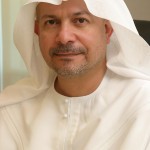
Dubai, United Arab Emirates: 20th March 2012: The Islamic finance industry is becoming one of the fastest growing components of the global financial system, with experts projecting growth rates of between 15% to 20% per annum. The Middle East region, which has played a pivotal role in the development of the Islamic banking and finance industry internationally, is witnessing a rapid expansion in the market share of its Islamic financial institutions with billions of dollars moving from the conventional banking system to the Shari’ah model. The World Islamic Banking Report, which was developed by Ernst & Young and launched at the 18th AnnualWorld Islamic Banking Conference (WIBC) in Bahrain last November, noted that Islamic banking assets in the Middle East and North Africa (MENA) region increased to US$416 billion in 2010, representing a five year CAGR of 20% compared to less than 9% for conventional banks. The report also said that as new geographies open up to Islamic banking, the MENA Islamic banking industry is expected to more than double to US$990 billion by 2015.
Held under the theme “Room to Grow: New Directions in the Next Growth Phase for Islamic Banking in the Middle East”, the 2nd Annual Middle East Islamic Finance and Investment Conference (MEIFIC 2012), which is set to be held on the 18th of April 2012 in Dusit Thani, Dubai, will gather more than 250 regional and international Islamic finance leaders in a powerful dynamic platform to explore the emerging the opportunities for Islamic finance and investments in the Middle East.
Speaking to the media ahead of the event,David McLean, Chief Executive of the Middle East Islamic Finance and Investment Conference said that, “with oil prices back on the rise, increased cash-flows, liquidity and average per capita income, the major markets in theMiddle Eastcontinue to be a place of significant interest for regional and international investors. TheMiddle Easthas also seen an unprecedented increase in public spending in the recent past. This denotes significant potential for the Islamic finance industry in the region as the leading Islamic financial institutions have strong balance sheets and are well positioned to fund these large-scale developmental projects at a time when the global liquidity pool is shrinking.”
“It is against this dynamic background that we are launching the 2nd Annual Middle East Islamic Finance and Investment Conference (MEIFIC 2012). Co-located with the 7th Annual World Takaful Conference, MEIFIC 2012 will focus on the opportunities and challenges that are forging the Islamic banking, finance and investment landscape in the region”, he added.
MEIFIC 2012 will be inaugurated by a special keynote inaugural session featuring Hussain AlQemzi, Chief Executive Officer, Noor Islamic Bank and Group Chief Executive Officer, Noor Investment Group; and Dr. Saleh Malaikah; Chairman, Rusd International Holding Group, Vice Chairman & Chief Executive Officer, Salama Group. Confirming his participation at the event, Mr. AlQemzi said that “it is heartening to see a significant increase in the market share of Islamic financial institutions not only in the Middle East region but internationally. The global financial crisis has given the Islamic banking and finance industry a great opportunity – an opportunity to tap into the growing interest in the Shari’ah-compliant finance model resulting from the obvious flaws in the conventional model. This will provide a solid foundation for the future growth of the Islamic finance industry. The growth opportunities are especially strong in theMiddle Eastas the region has been the least affected by the financial crisis.”
He also said that “given the strong growth in the Middle Eastern economies combined with better regulatory reforms and secure foundations that the industry has laid in the region, Islamic finance in theMiddle Eastis poised to enter its next growth phase. We are delighted to be supporting the 2nd Annual Middle East Islamic Finance and Investment Conference and we see this event as a unique platform for industry leaders to discuss the way forward for the regional Islamic banking and finance industry.”
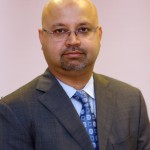
A similar view was expressed by Moinuddin Malim, Chief Executive Officer, Mashreq Al Islami who said that “the global Islamic banking and finance industry has been on a steady and consistent growth path with the Middle East being its nerve centre. Though the industry has built a wealth of opportunities and options for investors over the last decade, a lot more still has to be done in order for the industry to successfully compete with their conventional counterparts. The Islamic finance industry in theMiddle Eastis at a crucial evolutionary phase. Regardless of the current socio-political concerns facing some markets in theMiddle East, there is large untapped liquidity available at the disposal of investors in the region and it is critical that the Islamic finance industry realizes this potential and utilizes the opportunity to ensure stronger growth for the industry in the region. The theme for this year’s Middle East Islamic Finance and Investment Conference, “Room to Grow”, points at this tremendous opportunity and we hope that the discussions at this important event will seek to build a new growth path for Islamic banking and finance in theMiddle East.”
A key highlight of MEIFIC 2012 will be the exclusive industry leaders’ power-debate session. The session featuring Moinuddin Malim, Chief Executive Officer, Mashreq Al Islami; Geert Bossuyt, Chief Executive Officer, Dar Al Istithmar; and Oscar Silva, Chief Executive Officer, Global Banking Corporation B.S.C. (c) (GBCORP) will analyze strategies for building a sustainable high-growth trajectory for Islamic banking in theMiddle Eastand strengthening regional and international connectivity. The session will also assess new opportunities for Islamic finance in the aftermath of the Arab Spring.
 Cash And Trade Magazine For Cash and Trade professionals in the Middle East
Cash And Trade Magazine For Cash and Trade professionals in the Middle East

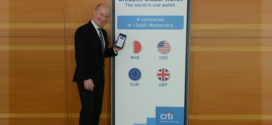
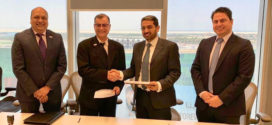
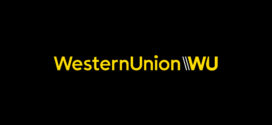
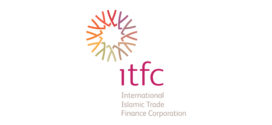
One comment